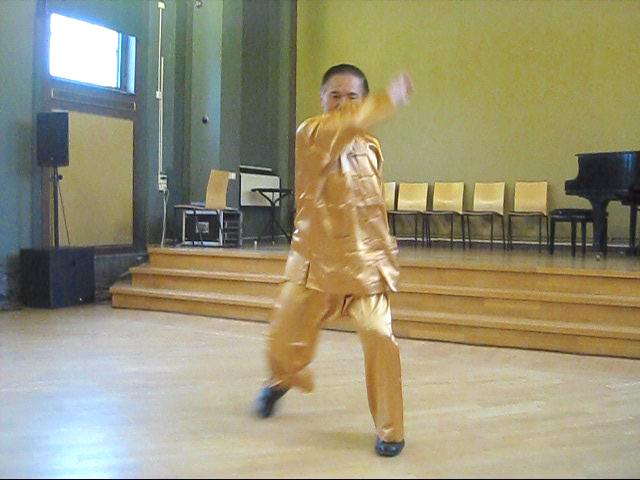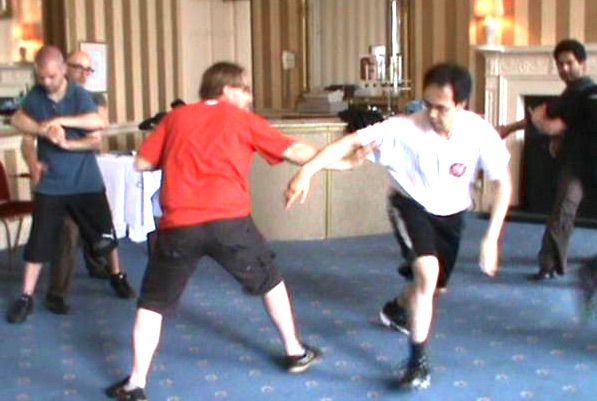COMPARISON OF WUZUQUAN, CHOY-LI-FATT, HOONG KA AND BAGUAZHANG

Choy-Li-Fatt Kungfu
Question
Hearing about Sifu Chee Kim Thoong sounds like something absolutely marvelous from a high budget Kung Fu film. The following is pulled from the Wikipedia page on him, which I assume is for the most part accurate as there are still many people in authoritative positions to fact check the information.
"After the conflict, Grandmaster Chee Kim Thong deliberately concealed his identity and his martial arts background, instead becoming increasingly known in Malaysia for his work as a very successful healer and bone-setter: bone-setting was one of the medical skills that authentic traditional Chinese martial arts that masters of his generation possessed.
Grandmaster Chee's martial arts prowess was publicly revealed when, whilst working as a bus conductor, he defended the bus driver from a mob of angry villagers wielding parangs (a type of swords) whilst unarmed. His reputation soon spread until Mr Yap Cheng Hai of Singapore (who would become Grandmaster Chee's first disciple) travelled to meet him and implored him to resume his teaching of the martial arts."
My question is in the same trend as my previous line of questioning, what are the specific features and characteristics of Wu Zu Quan in dealing with single unarmed against multiple unarmed, and single unarmed against multiple armed? What are the most noticeable similarities and contrasts of said tactics amd strategies in comparison to Choy Lay Fut, Hoong Ka, or Ba Gua Zhang?
Sonwukong
Answer
Not many people may know that Malaysia, called Malaya at that time, was probably the best place for kungfu masters to settle down in the 20th century. For political and economic reasons many kungfu masters left China for Southeast Asia. Some went as far as Europe, North America and Australia.
From my direct experience, I found that Malaya was the best place for them. The British who ruled Malaya at that time were liberal. Hence, kungfu masters could practice and teach their arts the ways they liked.
All my four sifus, whom I consider the best in the world, were from Malaya. I also studied in an English school, despite my father being a Chinese scholar, so that later I could spread these wonderful arts throughout the world. Coincidences, I believe, didn’t just happen.
I clearly remember that the most memorable phrase when I learned Wuzuquan in Sifu Chee Kim Thong’s house in Dungun, Malaysia through his eldest son, Sifu Chee Boon Leong, was “mg meng yong lak”, which is in Fujian dialect, the most widely spoken dialect by Wuzuquan practitioners, meaning “don’t use strength”. “Don’t use strength", of course, is the crucial factor in any internal force training.
Although I practiced San Zhan, the fundamental set of Wuzuquan, for two years, and San Zhan was specially meant fo develop internal force, I did not have any internal force. But there was no doubt that my senior classmates had a lot of internal force. I knew from knocking arms with them. My siheng, Sifu Chee Boon Leong, would leisurely place his arms above mine, and I could not move my arms away.
It was later when I learned from my third sifu, Sifu Ho Fatt Nam, the third generation successor from the Shaolin Monastery at Quanzhou, that I developed internal force. Internal force is a special feature or characteristic of Wuzuquan in dealing with single against multiple assailants regardless of whether the opponents were armed or not.
Another special feature or characteristic is agility, for which the Four-Six Stance used in Wuzuquan is very useful. When I learned San Zhan at Sifu Chee Kim Thong’s house in Dungun, I was unaware of this feature. I did not even know the combat application of the set. I only thought San Zhan was for developing internal force.
Agility is a special feature of Monkey Style, which forms one of the five styles of kungfu that make up Wuzuquan. I later learned that San Zhan was taught at the first level of Wuzuquan. The first level is also the most important level. In later levels, other kungfu sets are taught, and the Monkey Set is one of them.
I discovered this feature of agility in dealing with multiple opponents, as well as the versatility of San Zhan combat application, when I prepared to teach a special course of Wuzuquan. It was an eye-opening for me.
Compared to Choy-Li-Fatt Kungfu in dealing with multiple opponents, presuming all other things being equal, Wuzuquan is internal and relatively less mobile. A Wuzuquan strike can cause serious damage to opponents. Choy-Li-Fatt Kungfu is external, uses much body movement and moves about a lot
Comparatively, Hoong Ka Kungfu uses a greater variety of hand forms, greater body movement, and moves about more frequently. Hoong Ka Kungfu is similar to Choy-Li-Fatt, but the latter is relatively more external.
Amongst Wuzuquan, Choy-Li-Fatt, Hoong Ka and Baguazhang, and of course presuming all other things being equal, I would consider Baguazhang the most effective in dealing with multiple opponents. My ranking, in order of effectiveness, is Baguazhang, Choy-Li-Fatt, Hoong Ka Kungfu and Wuzuquan.
Both Baguazhang and Wuzuquan use internal force and agility, but they are quite different in the different arts. A Baguazhang strike can be very damaging, but if the Baguazhang master does not want to hurt his opponents he may not apply internal force. In Wuzuquan the internal force is innate. A Wuzuquan strike will damage the opponents, irrespective of whether the Wuzuquan master wants it, otherwise his strike may not be effective.
The focus of Baguazhang agility is in its footwork, whereas that of Wuzuquan is in its body movement. A Baguazhang master can get to the back of opponents easily. A Wuzuquan master uses his stance to counter-strike his opponents. Of course, a Baguazhang master can also use his stance to counter-strike, and a Wuzuquan master moves to the back of opponents, but here we are comparing the relative application of their particular features.
One needs a deep understanding of these various arts in dealing with multiple attack. Not many people have this deep understanding, and less can actually use the ability. Most kungfu practitioners today do not even know the combat application of the kungfu techniques they practice.

Bguazhang
This question and answer are reproduced from the thread Wu Zu Quan -- 10 Questions to Grandmasrter Wong in the Shaolin Wahnam Discussion Forum.
LINKS
